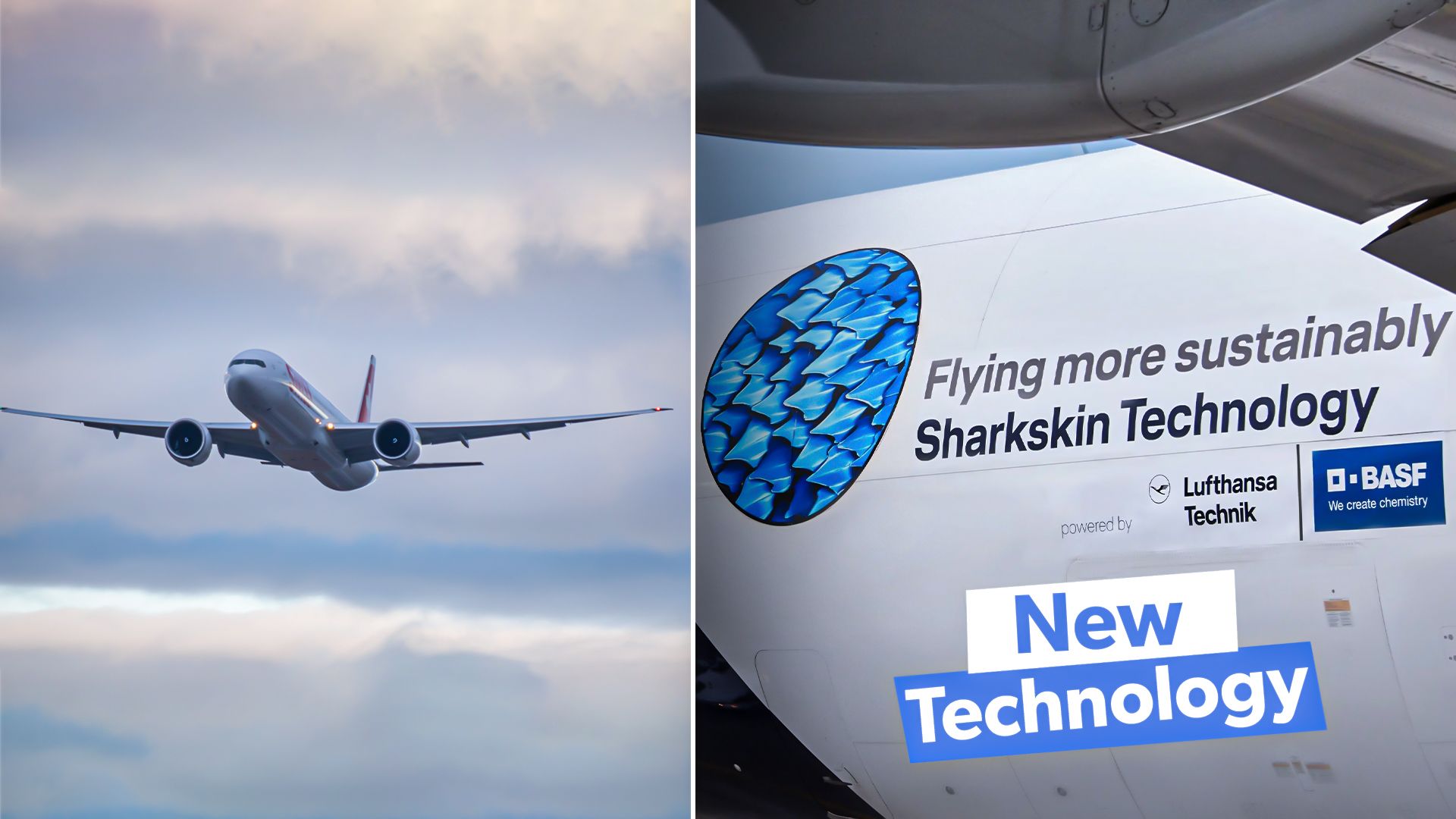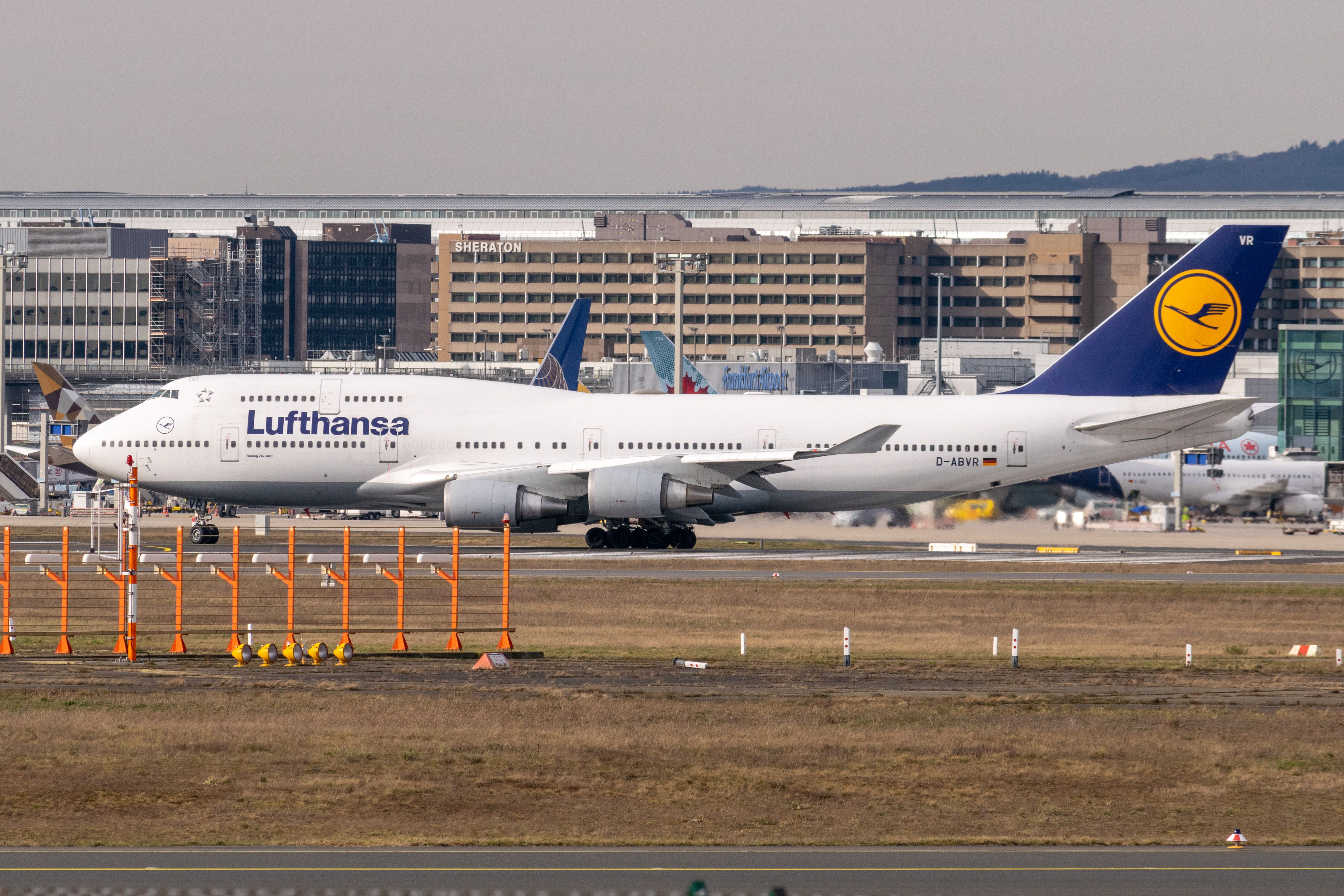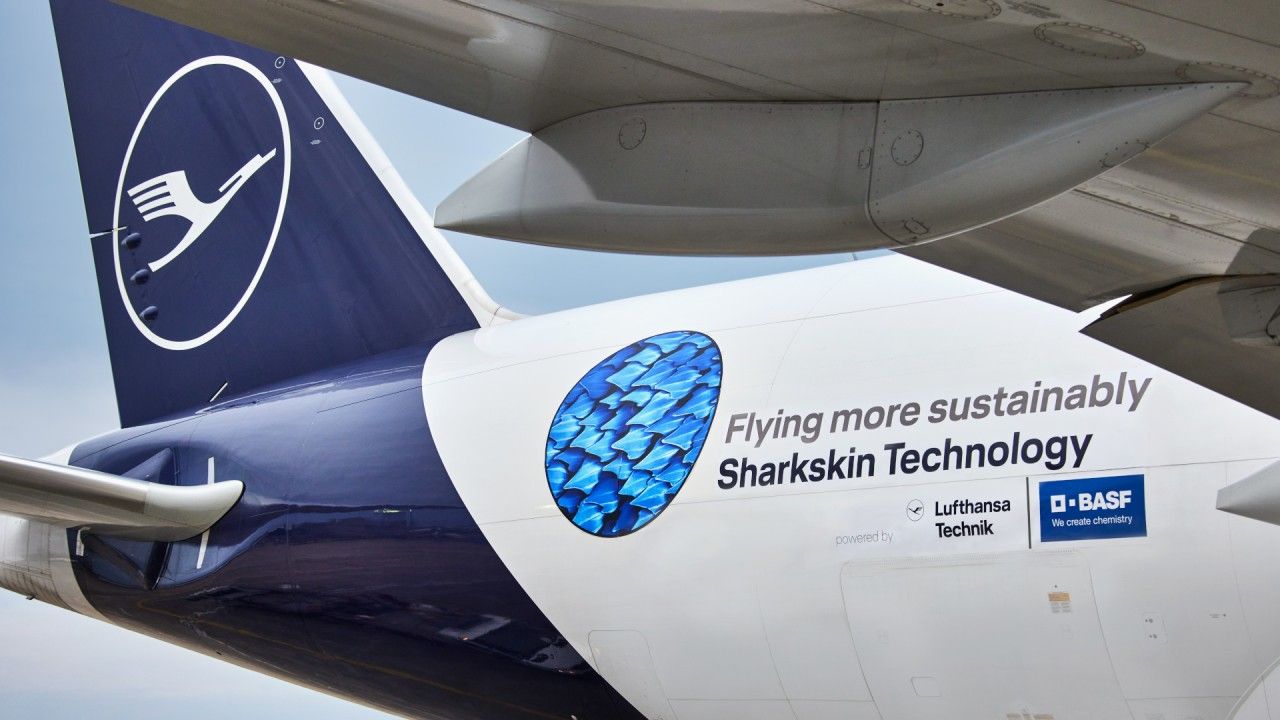Summary
- Sharkskin technology reduces fuel consumption & improves efficiency on aircraft while reducing carbon emissions significantly.
- AeroSHARK, mimicking shark skin riblets, lowers drag on planes, saving thousands of tons of fuel annually per aircraft.
- SWISS and Lufthansa are among the first airlines to implement AeroSHARK technology.
It may not be every day that you hear, “aircraft fuselages are inspired by sharks,” but the reality is that it is one of the most unorthodox innovations regarding commercial aircraft. Although these well-known sea creatures and rulers reside deep beneath the ocean’s surface, they have somehow influenced new ways to improve the performance of aircraft transporting people around the globe high into the atmosphere. Sharkskin technology not only reduces fuel consumption on newly manufactured aircraft, but also enhances fuel efficiency of legacy planes, which perhaps is one of its most notable benefits. Since its introduction in 2019, the technology has been implemented on over 15 aircraft.
Aerospace manufacturing companies have turned to nature as the best example since it has clearly offered ideal solutions to be better caretakers of the climate. It is evident that the aviation industry has been under increasing pressure from lawmakers and the general public to reduce its environmental footprint significantly. As a result, sharkskin technology has joined the likes of research involving initiatives such as sustainable aviation fuels (SAF) produced from biogenic waste, hydrogen-powered aircraft, and aerodynamically designed aircraft. But how exactly does it work?
“An evolutionary advantage”
According to Dr. Kai-Christoph Pfingsten, the Head of Production Engineering – Engine Services Lufthansa Technik, scientists have been aware of the unique qualities of sharkskin for over four decades.
“More than forty years ago, the German biologist Wolf-Ernst Reif (1945 – 2009) found small longitudinally grooves on shark skin fossils using one of the newly available scanning electron microscopes. When he found the same microstructures on the skin of fast swimming sharks from our time, he knew he had found something interesting. Something that obviously has given the shark an evolutionary advantage over many millions of years.”
Photo: Nieuwland Photography | Shutterstock
Subsequent research found that the tiny particles reduce the skin friction in fluids and lower the drag of an object moving through water or air. They were experimentally studied in Berlin, allowing scientists to learn more about the unusual effect that the microstructures had on flow.
Initial studies at Harvard University and Emory University discovered three character main characteristics of sharkskin, according to international aerospace company Aertec:
- Less friction
- Increased speed
- Reduced expenditure of energy
After multiple tests, experiments, and research involving different structured surfaces with artificial shark skin glued on, the concept of AeroSHARK was essentially born. German airline Lufthansa was the first to bet on the innovative technology. In 2019, the carrier performed the first tests on a portion of the Boeing 747-400 fuselage. The carrier found that friction on the aircraft was reduced by 0.8%.
Photo: Tom Boon | Simple Flying
Although the number seems small, aircraft accumulate thousands of operational hours throughout their lives, meaning the calculation results in several tons of fuel being saved annually. The test determined that the technology would not only positively impact the economics of airlines, but also in lessening the carbon footprint of aircraft.
Millions of riblets
As such, AeroSHARK is a durable bionic film that mimics the skin of sharks. Jointly developed with leading global chemicals and coatings manufacturer BASF, the biomimetic technology is formed into a thin film with a hardly noticeable ribbed texture of small protrusions known as riblets. Millions of the prism-shaped riblets, which are each about only 50 micrometers high, are applied to aircraft specifically to increase efficiency. They can also be placed on the wings to improve lift.
“Fact is that our riblet technology can be applied to any aircraft with a similar effect,” said Jens-Uwe Mueller, the Manager of AeroSHARK.
Photo: Lufthansa Technik
According to Lufthansa Technik, the artificial sharkskin can be applied with ease regardless of the size of the aircraft and is versatile.
“The riblet film is easy to apply, even on large commercial aircraft – up to 500 m2 on a Boeing 747-400’s lower fuselage and belly fairing. It is extremely resilient, withstands large temperature shifts, pressure differentials and the ultra violet radiation on high flight levels.”
In 2022, AeroSHARK began to be rolled out across Lufthansa Cargo’s entire 777 Freighter fleet. The airline estimated that drag on each plane would be reduced by more than one percent, while all ten aircraft would provide annual savings of around 3,700 tons of fuel and just under 11,700 tons of carbon emissions. The amount is equal to nearly 50 individual cargo flights from Frankfurt to Shanghai.
Dorthea von Boxberg, the CEO of Lufthansa Cargo, spoke about the innovative technology being applied to the fleet.
“We are proud that we will now be able to operate our entire freighter fleet even more efficiently in the future thanks to sharkskin technology and reduce the carbon footprint of our modern fleet further.”
Finding the solution to a great challenge
SWISS International Air Lines became the first passenger carrier in the world to utilize AeroSHARK technology on its flights in October 2022. The airline’s first scheduled flight to use the innovation operated from Zurich to Miami on October 14th. All 12 of its 777-300ERs have been retrofitted with the artificial skin. The airline said it will reduce its annual fuel consumption by more than 4,800 tones and result in fewer CO2 emissions by up to 15,000 tons. It also aligns with the carrier’s and industry-wide goal to reach net zero emissions in the next 26 years.
“Reducing its environmental footprint is one of the greatest challenges ahead for the aviation sector, and being carbon-neutral in our flying by 2050 is a key SWISS strategic objective,” said SWISS CEO Dieter Vranckx. “We put a major emphasis at SWISS on actively promoting and making targeted investments in new technologies.
With the satisfactory results of AeroSHARK technology, the world’s major aircraft manufacturers are working on ongoing projects, according to Aertec. It is likely that more airlines will take an interest in the technology in the near future as they race toward reducing the aeronautical carbon footprint to zero.



